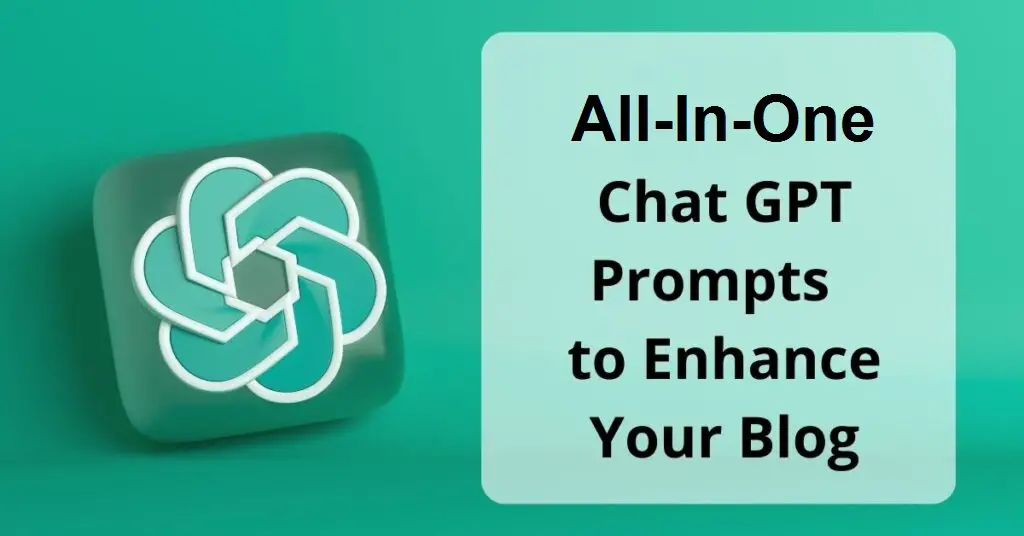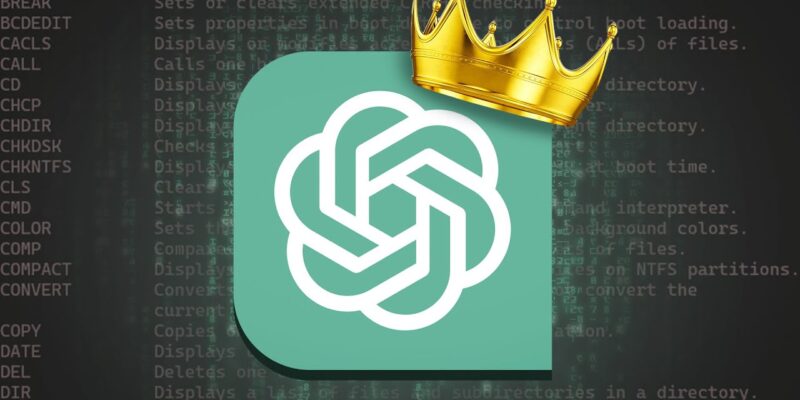ChatGPT is the best thing that has happened to this generation because of its ability to do any and everything, but knowing the that one ChatGPT prompt to generate anything is still hidden from 99%.
In this blog post, I will share the secret behind a powerful platform that was that first to crack the All-in-One ChatGPT Prompt and built a multi billion dollars business out of this simple but hidden ChatGPT prompt that allows you to create any AI tool in seconds.
Through personal insights and experiences, I will demonstrate how the platform’s dynamic power prompts and reusable templates can revolutionize your AI tool-building process.
So, let’s dive in and explore the easiest and fastest way to comprehend this concept that is known and used by on 1% of the world population currently.
The Power of Dynamic ChatGPT Prompts

To illustrate the concept effectively, let’s begin with a practical example using the popular AI model, ChatGPT. In a typical scenario, when interacting with the language model, we provide a specific prompt.
For instance, we might ask it to generate five SEO-optimized titles for a vlog about a specific topic, such as engineering. The AI model would then generate the desired titles, tailored to the given prompt. However, we encounter a limitation—these titles are specific to the engineering domain.
When it comes to building AI tools, the power of dynamic ChatGPT prompts cannot be overstated.
Dynamic AI prompts enable us to create versatile and adaptable AI applications that can cater to a wide range of needs and topics.
Let’s explore in more detail how dynamic prompts revolutionize the AI tool-building process.
- Flexibility and Customization: Dynamic prompts provide the flexibility to customize AI tools based on specific requirements. By incorporating user input within the prompts, we can create tools that generate tailored outputs. Whether it’s generating SEO-optimized titles, creating unique stories, or performing other AI-driven tasks, dynamic prompts allow us to adapt the tool to different topics and preferences.
- Expanding Possibilities: Gone are the days when AI tools were limited to specific domains or use cases. With dynamic prompts, we can unlock a world of possibilities. By allowing users to input their desired topic or content, AI tools can generate outputs that cater to various fields, industries, and creative pursuits. The power of dynamic prompts opens the door to endless potential applications.
- User-Centric Approach: Dynamic prompts prioritize user experience and satisfaction. By providing the opportunity to customize the prompts, users can tailor the AI tool to their specific needs, ensuring that the generated outputs align with their goals and preferences. This user-centric approach enhances the effectiveness and relevance of the AI tool, making it a powerful asset in achieving desired outcomes.
- Enhanced Creativity: Dynamic prompts foster creativity by offering users the freedom to explore different concepts and angles. By allowing users to input their own ideas and topics, AI tools become powerful allies in the creative process. Whether it’s generating innovative blog titles, brainstorming new product ideas, or crafting engaging narratives, dynamic prompts empower users to think outside the box and unleash their creative potential.
- Iterative Improvement: Dynamic prompts facilitate iterative improvement of AI tools. By experimenting with different prompts and user inputs, we can refine and optimize the generated outputs. This iterative process allows for continuous learning and enhancement, ensuring that AI tools evolve and adapt to changing requirements and user feedback.
- Automation and Efficiency: With dynamic prompts, the AI tool-building process becomes more automated and efficient. Users no longer need to manually modify code or prompts for every specific use case. Instead, by inputting the desired topic or content, the dynamic prompts generate the appropriate prompts and outputs automatically. This automation saves time and effort, enabling users to focus on other critical aspects of their work.
- Democratization of AI: Dynamic prompts contribute to the democratization of AI by making it accessible to a wider audience. By simplifying the tool-building process and allowing users to customize prompts, even individuals with limited technical knowledge can leverage AI tools to accomplish their tasks more effectively. This inclusivity expands the reach and impact of AI, empowering individuals from various backgrounds to benefit from its capabilities.
Dynamic prompts have revolutionized the way we build AI tools, offering flexibility, customization, and efficiency. By incorporating user input, we can create AI applications that cater to specific needs and topics, expanding the possibilities and enhancing creativity.
Through the power of dynamic ChatGPT prompts, AI tools become more accessible, empowering users to unlock the full potential of artificial intelligence.
Embrace the transformative power of dynamic prompts and embark on a journey of AI-driven innovation and productivity.
Reusable AI Prompt Templates

To make our prompts more generic and versatile, we can create reusable templates.
By using square brackets and incorporating user input, we transform the prompt into a template.
For example, we replace “prompt engineering” with “[topic],” allowing users to input any desired topic. This template can generate SEO-optimized titles for different topics, catering to the user’s specific needs.
It’s like having a flexible tool that can adapt to various domains effortlessly.
Step-by-Step Guide: Creating Reusable AI Prompt Templates
Creating reusable AI prompt templates is a powerful technique that allows you to generate AI outputs for different topics or contexts.
Follow these steps to create your own reusable AI prompt templates:
- Identify the Purpose and Use Case:
Determine the purpose of your AI prompt template. Are you looking to generate titles, stories, or responses to specific queries? Clarifying the use case will help you design a prompt template that serves your intended goal. - Craft a Basic Prompt:
Start by crafting a basic prompt that represents the desired output you want from the AI model. For example, if you want to generate SEO-optimized titles, your basic prompt might be “Generate [number] SEO-optimized titles for a [topic] blog about [topic].” - Replace Specific Keywords with Placeholders:
Identify the keywords in your basic prompt that will change based on the user input. Replace these keywords with descriptive placeholders enclosed in square brackets. For instance, you can replace “[number]” with “[title_count]” and “[topic]” with “[user_input].” This allows for dynamic customization of the prompt. - Explain Placeholder Usage:
To ensure others understand how to use your template, provide clear instructions on which placeholders they should replace and with what kind of input. For example, explain that “[title_count]” should be replaced with the desired number of titles, and “[user_input]” should be replaced with the specific topic. - Test the Template:
Before sharing your template, test it with various inputs to ensure it produces the desired outputs. Experiment with different topics, numbers, or any other relevant variables to validate the template’s effectiveness and flexibility. - Document and Share the Template:
Document the template, including the basic prompt, placeholders, and instructions, in a clear and concise manner. You can create a document or readme file outlining the template’s usage. Share this documentation with others who might benefit from the template, whether it’s a team, community, or wider audience. - Encourage Iteration and Collaboration:
Invite others to use your prompt template and provide feedback. Encourage them to experiment with different inputs and share their experiences. This collaborative approach fosters continuous improvement and allows for the discovery of new and innovative use cases for the template. - Refine and Optimize:
Based on user feedback and personal experience, refine and optimize your prompt template. Adjust the wording, placeholders, or instructions to enhance clarity, usability, and effectiveness. Iteratively refining your template will make it more versatile and adaptable to various scenarios. - Explore Advanced Techniques:
As you become more proficient in creating reusable prompt templates, consider exploring advanced techniques. This could include incorporating conditional statements, additional placeholders, or pre-processing steps to further enhance the flexibility and output of your AI tools. - Share and Contribute:
Share your improved template with the wider community through forums, documentation platforms, or AI tool repositories. By contributing to the collective knowledge, you not only empower others but also inspire further innovation and collaboration in the field of AI tool-building.
By following this step-by-step guide, you can create reusable AI prompt templates that unlock the power of customization and adaptability.
These templates enable you to generate AI outputs for different topics and use cases, saving time and effort while expanding the possibilities of AI tool-building.
Embrace the potential of reusable AI prompt templates and embark on a journey of creating versatile and powerful AI applications.
The Evolution Of Dynamic Power Templates
While reusable templates serve their purpose, our ultimate goal is not limited to creating title generators alone. We aspire to build any AI tool, expanding the realm of possibilities.
To achieve this, we introduce the dynamic power template. By combining user input and dynamic prompts, we create a more robust and customizable tool-building experience.
Unleashing the Dynamic Power Template
To demonstrate the dynamic power template in action, let’s explore a simple Python script called “generate_template.”
This script utilizes two parameters: user input and user prompt. By executing the script, we generate the power prompt, with both the prompt and user input being dynamic elements.
The user input replaces the corresponding placeholders in the prompt, resulting in a customizable template.
Practical Application: Exploring Free AI Kit
Now, let’s apply our newfound knowledge to the Free AI Kit platform, where you can witness the versatility of dynamic power templates.
By accessing the playground, you can paste your prompt and select the desired template. The platform prompts you to enter the dynamic user input, allowing you to customize the generated tool.
The playground’s array of tools, such as the children’s story generator, follow the same principle, dynamically generating content based on the user’s input and the specified prompt.
Embracing the Ease of Building AI Tools

Thanks to the power of dynamic prompts and reusable templates, building AI tools has become incredibly accessible.
With Free AI Kit, you have the freedom to generate any AI tool by simply combining dynamic prompts and user input.
The possibilities are endless, and the process is now more approachable than ever before.
Getting Started and Seeking Support
To further explore this concept and dive into the technical aspects, I encourage you to refer to my detailed video guide below, including scripts and additional resources.
Should any questions arise, I am here to assist you. Feel free to post your queries in the comment section, where I actively engage with the community, offering free support and guidance.
Conclusion: Unleash Your AI Tool-Building Potential
Free AI Kit platforms empowers you to build custom AI tools effortlessly. By harnessing the dynamic power of prompts and reusable templates, you can generate a wide array of AI applications tailored to your specific needs.
Whether you’re developing SEO-optimized titles, crafting unique stories, or exploring any other AI endeavor, this innovative approach revolutionizes the way we create and utilize AI tools.
Embrace the possibilities that dynamic ChatGPT prompt offers, experiment with dynamic power templates, and unlock your full potential in the world of AI tool-building.
The future is now at your fingertips, and with the support of the dynamic AI community, your journey will be both exciting and rewarding.
Discover more from Digital Wealth Guru
Subscribe to get the latest posts sent to your email.








Comments